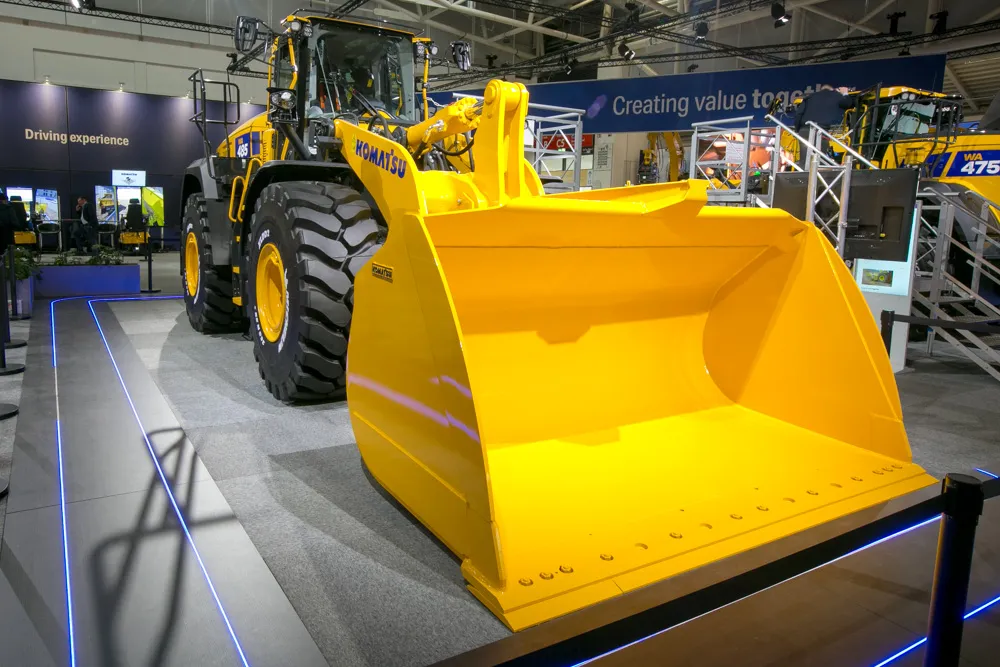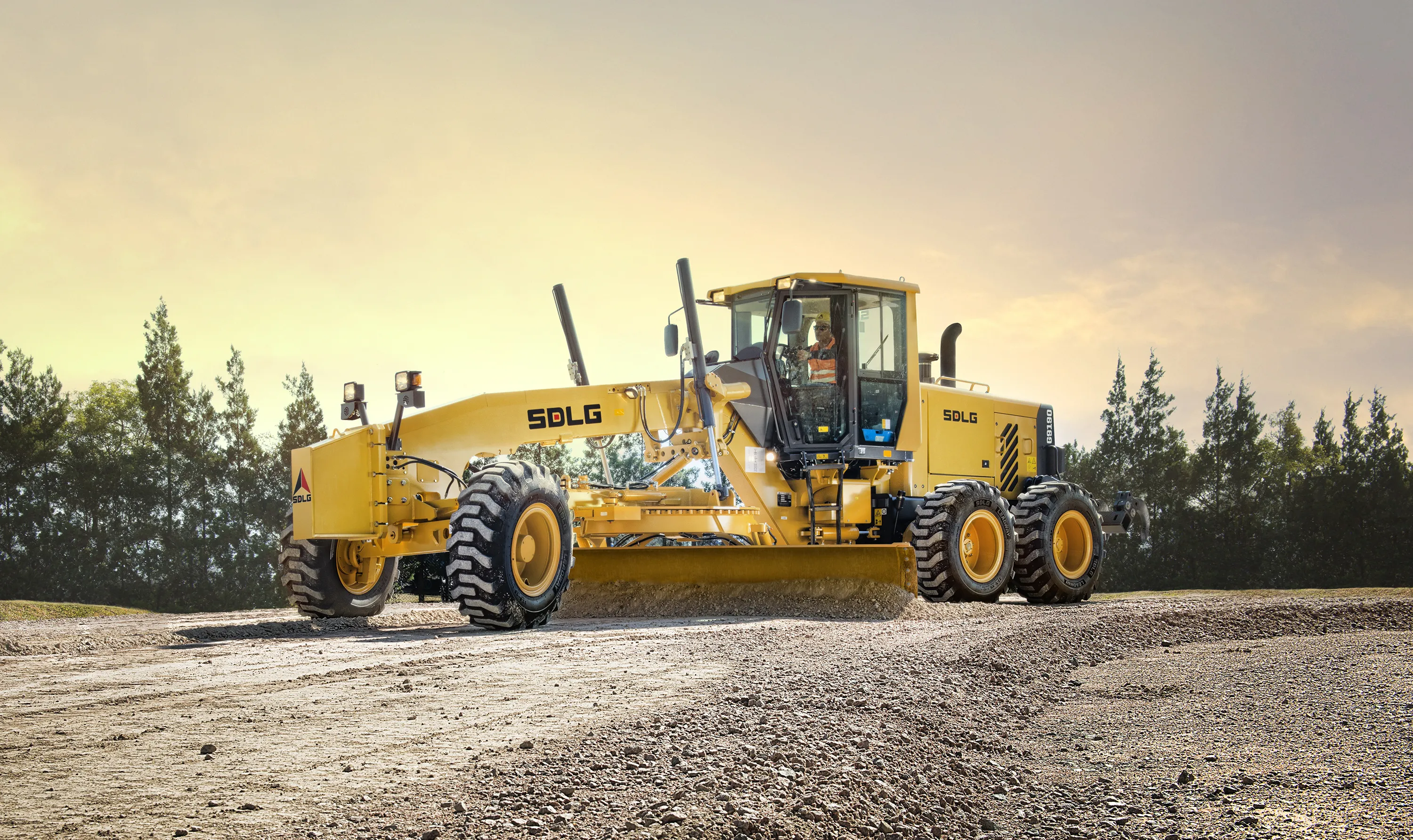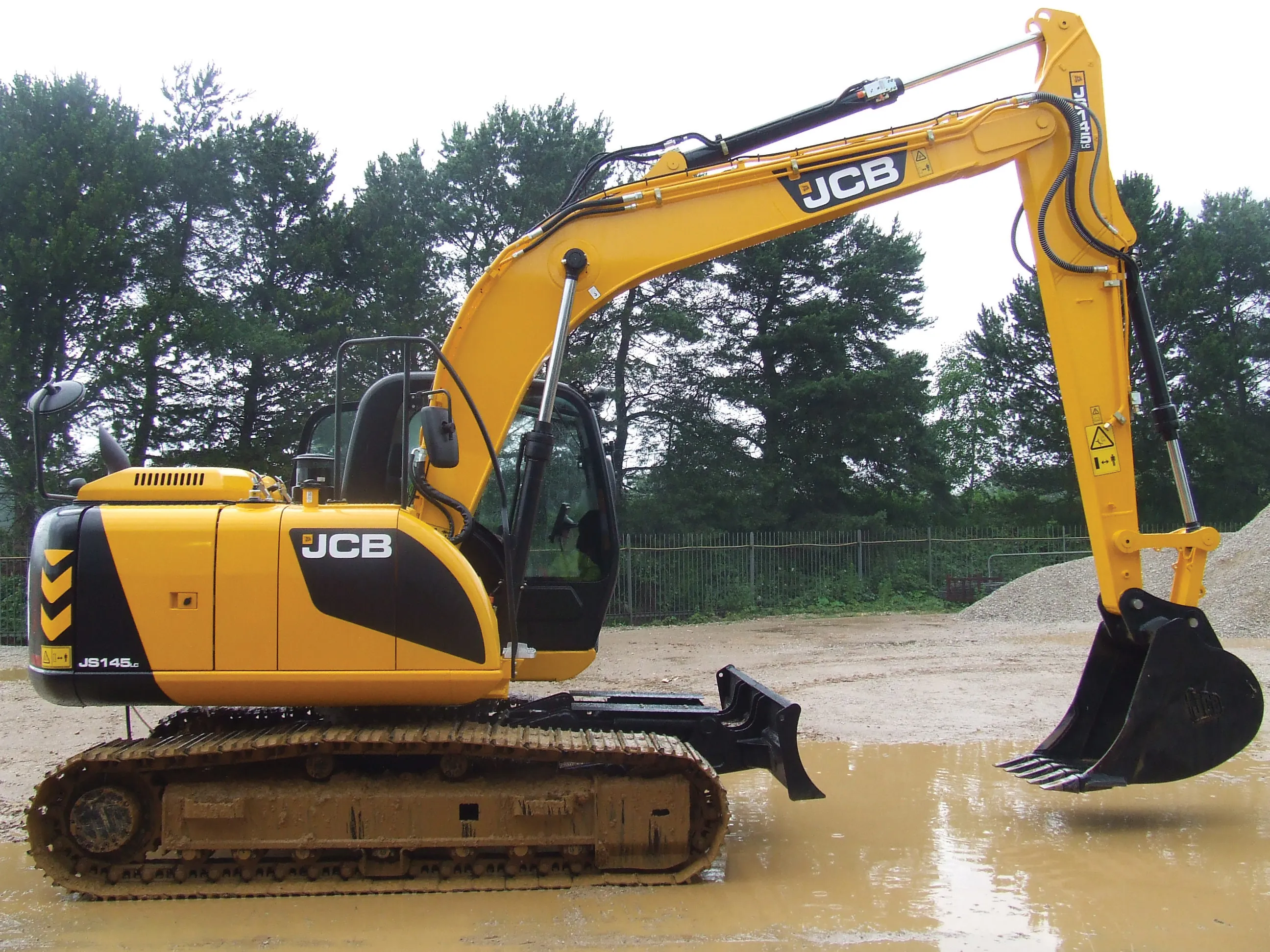
Komatsu Europe has premiered its new next-generation WA475-11 and WA485-11 wheeled loaders, which the manufacturer says represent a leap forward in performance and efficiency.
At the heart of new Dash 11 generation wheeled loaders is a newly developed Komatsu diesel engine which is characterised by extremely high torque in the low-speed range. This new engine is combined with a Komatsu-designed hydro-mechanical-transmission (HMT), resulting in excellent performance, power reserves, fuel efficiency and ease of operation for all transport and loading tasks.
The WA475-11 demonstrates a 14% improvement in fuel efficiency over its Dash 10 predecessor, while the WA485-11 achieves a 29% increase in fuel efficiency compared to its predecessor WA480-8.
Thanks to a constantly variable gear ratio, the engine stays in a highly efficient fuel zone. Variable-speed control makes it possible to individually adapt the machine's maximum speed to the requirements of the job site. The adjustable variable-traction control effectively limits wheel spin in difficult ground conditions.
Compared to its predecessor WA480-8, the WA485-11 has experienced a significant upgrade in payload and bucket capacity, says Komatsu.
All machine components have been adapted to a permanent payload of 8,800kg and can even be increased to 9,300kg in an aggregate-handling variant, which helps to reduce the number of loading cycles required depending on the vehicle size.
Komatsu's commitment to sustainability is evident in the new wheeled loaders' advanced emissions-control systems, which meet EU Stage V standards.
On top of that, the well-proven Komatsu exhaust system includes a diesel particulate filter (KDPF) which, together with the selective catalyst reduction (SCR) system, further reduces NOx emissions using AdBlue.
These technologies, in conjunction with the particularly low-emission combustion, allow the diesel particulate filter to be replaced only every 8,000 hours; this interval can be extended even further by using particularly low-ash engine oils.
Another new feature is the variable-power control, which enables the lifting speed to be controlled independently of the accelerator pedal. Never before has it been easier for an operator to find the right balance between traction and lifting power, the company claims.
The optimised Z-bar linkage offers up to 20% more lifting power and a higher production rate of tons per hour. Remarkable lifting speed and class-leading machine stability help to increase productivity, especially in tight V-shaped loading applications. In addition, the hydraulic response time and the tipping or lifting speed can be adjusted to specific application requirements.
The new cab offers generous all-round glazing and has an interior noise level of just 70 dB(A). The heated rear window is angled, which effectively prevents dirt from sticking on the rear screen. The lever console has a new command control switch and is adjustable on a 5-way axis for each operator, and the increased internal air pressure prevents dust and other particles from entering the cab.
Both machines are also equipped with a rear-hinged door, angled steps and large handrails; and a new air-suspended seat dampens vibrations for a comfortable driving experience. The seat-mounted, electronic-pilot-control levers with a new ergonomic design improve operating comfort and reduce operator fatigue.
The “automatic bucket filling” and other assistance functions further help the operator maintain productivity even during long shifts.
A fully digital, high-resolution driver-information system provides important machine measurements, including KDPF status and data on AdBlue levels and fuel consumption. Messages from the ECO control system are displayed in real time during operation and on the exit screen when the ignition is turned off. The ECO control menu allows the operator to check operating logs and fuel consumption. These records are useful for reducing overall fuel consumption and can be saved and sorted by the operator.
Another key innovation is a newly developed angle-feedback-joystick-steering (AFJS) system which means no steering wheel. The AFJS technology gives the driver feedback on the steering angle already achieved at any time via the position of the steering lever.
AFJS is very intuitive to use, says Komatsu, and it eliminates the need for a steering column, which helps to improve visibility of the work platform and space.
The programmable engine-management system automatically switches the engine off when idling or lets the engine run to cool down after leaving the cab … and then switches off automatically later.









